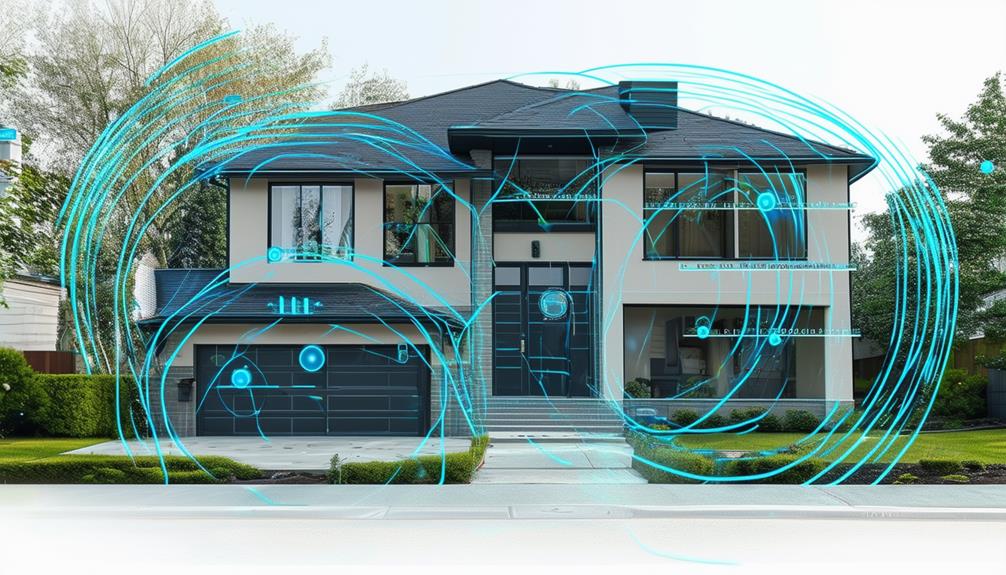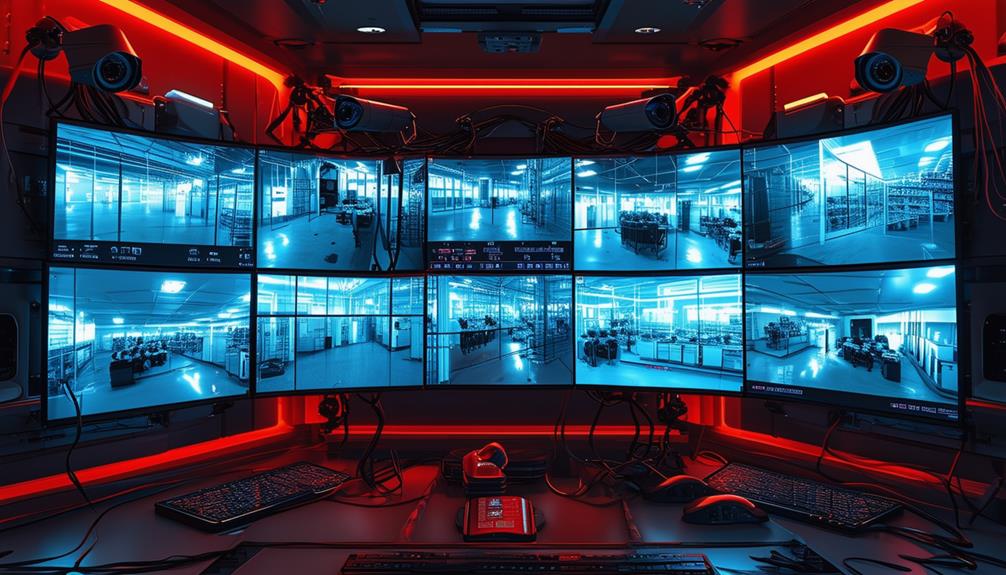When it comes to enhancing the accuracy and efficacy of facial recognition systems in surveillance, I focus on three key areas: robust data collection and diverse datasets, rigorous testing procedures that simulate real-world conditions, and the integration of advanced technologies like deep learning and knowledge distillation. By combining these approaches, I improve the precision and reliability of surveillance systems while mitigating the risk of bias and ensuring privacy protection. Dive deeper into these aspects to understand their impact on the continuous improvement of face recognition technology. Additionally, fostering collaboration with diverse communities can help address prevalent biases in data collection, leading to more equitable outcomes. Moreover, regular updates and feedback loops from real-world applications are essential for fine-tuning algorithms and enhancing facial recognition technology. By prioritizing ethical considerations alongside technical advancements, we can create systems that are not only effective but also respectful of individual privacy rights.
Key Takeaways
- Use diverse datasets to enhance accuracy: Facial recognition technology relies on diverse datasets for training and performance, ensuring robustness in various conditions.
- Implement robust testing procedures:
- Employ advanced AI technologies: Face recognition systems use cutting-edge technologies like CNN and deep learning to resolve limitations in traditional approaches.
- Prioritize ethical considerations: Ensure privacy protection and prevent bias in technology by considering ethical factors in the development and deployment process.
- Continuously update and train models: Regularly train models on large datasets to increase precision and account for any new data or scenarios.
Data Collection and Datasets
Facial recognition technology heavily depends on high-quality and diverse datasets for effective training and accurate performance. Using a varied and thorough dataset is essential for developing strong facial recognition systems. By collecting data from multiple sources, we can greatly enhance the accuracy and reliability of these systems. Such datasets should be annotated with detailed information on facial features, which can further improve the performance of facial recognition algorithms.
Ethical considerations are crucial in data collection to guarantee privacy protection and prevent bias in facial recognition technology. This includes collecting biometric data with informed consent and ensuring that individuals involved in the data collection process are diverse in terms of race, gender, and other characteristics.
Proper annotation and continuous updates of datasets are essential for adapting facial recognition models to changing environments, which is particularly important in surveillance applications. These steps can guarantee the development of strong and ethically sound facial recognition systems that provide high accuracy in data analysis.
Robust Testing Procedures
We meticulously construct robust testing procedures by simulating various real-world conditions to guarantee that facial recognition systems operate with high accuracy. These procedures involve thorough evaluations under diverse scenarios to secure that the technology performs robustly across different factors such as lighting conditions, angles, distances, and facial expressions.
This meticulous assessment helps in identifying potential weaknesses in the system, allowing for continuous improvement and optimization. By testing against diverse datasets and real-world scenarios, we can validate the effectiveness and reliability of facial recognition technology.
Accurate evaluation of these systems is vital for their successful application in surveillance. Implementing rigorous testing procedures is crucial for enhancing the performance and reliability of facial recognition systems in these applications. Consistent evaluation under various conditions allows us to refine the technology and guarantee it continues to deliver high levels of accuracy.
As we work diligently to perfect our surveillance systems, rigorous testing remains an indispensable component, ensuring that our facial recognition systems operate with precision and reliability.
Technological Advancements and Integration

Modern face recognition systems rely on cutting-edge technologies like convolutional neural networks (CNN) and deep learning to achieve improved recognition accuracy, greatly surpassing traditional methodologies. These advancements allow for the integration of AI technologies within facial recognition systems, resolving limitations inherent in traditional approaches.
Techniques such as knowledge distillation and transfer learning are instrumental in enhancing facial recognition accuracy by efficiently leveraging the knowledge from heavy networks.
The deployment of deep learning techniques, particularly CNN, is critical for upgrading the performance of face recognition systems. Continuous training and analysis of large datasets are essential for increasing the precision of facial recognition technology.
This integration of advanced technologies bridges the gap between existing capabilities and the ideal performance required in surveillance applications.
Frequently Asked Questions
How Can We Improve Facial Recognition?
To improve facial recognition, I leverage deep learning techniques like Convolutional Neural Networks (CNN) and optimize algorithms to enhance biometric matching accuracy while addressing privacy concerns, ensuring robust data security and diverse facial databases for reliable surveillance applications.
What Are the Key Points for Face Recognition?
To guarantee accurate face recognition, I focus on optimizing facial features, image quality, and machine learning algorithms.
What Are the Three Steps for a Facial Recognition System?
"For a facial recognition system to work effectively, you need three steps: *detection* to identify the face, *alignment* to standardize facial features for accurate comparison, and *feature extraction* to create a unique facial signature."
What Are Three Key Benefits of Facial Recognition?
As I explore the benefits of facial recognition, I find that it offers enhanced security through accurate suspect identification, faster identification speeds, and increased efficiency, ultimately ensuring safer communities and streamlined policing processes.








